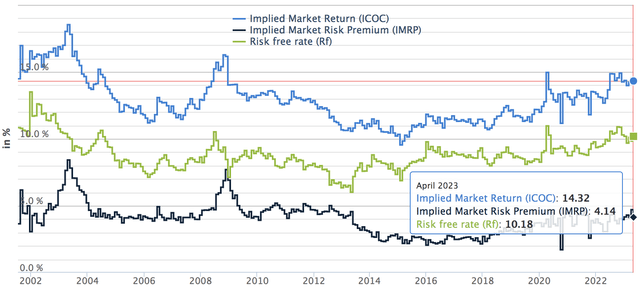It has been a quarter since our latest coverage of iShares MSCI South Africa ETF (NYSEARCA:EZA), and numerous events have occurred since then, meaning it is time for an update.
Although much of the international investment world is aware of South Africa’s systemic concerns, additional events have unfolded that I believe are yet to be priced by the market. Therefore, it is with great joy that I am able to update our readers on recent events.
By assuming a qualitative vantage point, today’s article aims to update our stance on systemic risk premiums and EZA’s sector exposure. Without further ado, let us get stuck in!
Seeking Alpha
Systemic Events
It is well-known by now that South Africa is faced with electricity grid issues amid the so-called collapse of the nation’s primary electricity provider, Eskom, which supplies more than 90% of South Africa’s electricity. However, additional worries have emerged after South Africa’s Reserve Bank warned that it is preparing for a “grid collapse.”
Although the Reserve Bank’s claims are vague, I can substantiate the matter by adding that the common rhetoric among people in South Africa’s public sector is that Eskom is on the brink of collapse. The entity has run out of capital due to mismanagement, and it is under severe political control from the ANC, who just do not seem to care about South Africa’s basic needs.
Furthermore, South Africa has been subject to rumors of relations with Russia regarding a possible weapons-supply arrangement. According to the U.S. ambassador to South Africa, Reuben Brigety:
“Among the things we noted was the docking of the cargo ship in Simon’s Town naval base between the 6th to the 8th of December 2022, which we are confident uploaded weapons and ammunition onto that vessel in Simon’s Town as it made its way back to Russia.”
Although the ambassador’s claims remain unproven, we do not believe a South Africa-Russia relationship is out of the question, given the ANC’s past relationships with the nation and South Africa’s BRICS membership. Therefore, we think South Africa is at risk of secondary sanctions if the U.S. and its allies decide to intensify their stance on Putin’s Russia. According to South Africa’s Reserve Bank, such an event would cause severe damage to the international payments system and sink the economy into the abyss.
In simple terms, qualitative factors and the quantitative chart below imply that South African risk premiums have risen even further since our latest coverage of EZA.
SA Risk Premiums (marketriskpremia.com)
Sector Exposure
The iShares MSCI South Africa ETF possesses both style and sector risk. In addition, the exchange-traded fund (“ETF”) hosts merely 45 securities, which means that it hosts security-based risk as well as it is not fully diversified.
Considering the shape of the South African yield curve, more than 30% exposure to financials is a good idea. If the yield curve were inverted, the excess exposure would be a worry. In addition, the ETF is very bank-heavy, with investments in leading banks such as ABSA and Standard Bank. The South African banking industry is very concentrated, with the top banks holding robust market positions, allowing them to profit from high-yield debt.
Furthermore, the ETF has plenty of exposure to PGM (platinum group metals) mining, with investments in Impala Platinum (OTCQX:IMPUY) and Anglo American Platinum (OTCPK:ANGPY). In our opinion, PGM mining is one of the most overlooked pockets of growth across the world and a key source of future value for investors to take advantage of.
EZA Sector Allocation (Seeking Alpha)
The drawback here is EZA’s exposure to communication and consumer goods assets. The prior is exposed to South Africa’s failing infrastructure as power outages are causing tremendous operational challenges for telecom providers. In addition, consumer cyclical businesses are struggling to cope with rising costs. For example, Tiger Brands Limited (OTCPK:TBLMF), a South African retailer, recently reported a 500% year-over-year increase in energy costs.
Lastly, we would like to have seen more exposure to the healthcare sector as recession risk is running high. Moreover, the ETF is high-beta, which might cause many investors to stay away from the ETF for the time being.
Return Prospects
In isolation, one could argue that the EZA ETF is well-placed for value-seeking investors. I say this because the ETF trades with a price-to-earnings ratio of merely 7.61 and a price-to-book multiple of only 1.61. On top of that, EZA has a dividend yield of 4.35%.
Nevertheless, as highlighted earlier, risk premiums are rising, and it must be considered that this can be a value trap.
Final Word
Our analysis shows that the iShares MSCI South Africa ETF is at risk of losing more value as risk premiums continue to rise in South Africa. Moreover, the ETF’s sector allocation possesses a few fault lines. Therefore, we have decided to affirm our sell rating on the EZA security.
Editor’s Note: This article discusses one or more securities that do not trade on a major U.S. exchange. Please be aware of the risks associated with these stocks.
Read the full article here












